Species
Conservation programs funded by the National Fish and Wildlife Foundation benefit hundreds of species and the habitats they depend on across the United States. NFWF has developed conservation strategies with measurable outcomes that track progress for many of these species. These species are good indicators of healthy habitats.
These strategies and metrics can be found in NFWF’s business plans developed by scientists and other experts, and approved by the Foundation's Board of Directors. NFWF programs fund conservation grants that implement the strategies and actions identified in the business plan.
Click on the species to learn a little about it, and which programs fund grants to conserve the species and its habitat.

Palila
The palila is a unique finch-billed Hawaiian honeycreeper currently restricted to a narrow range of dry-forest forest on the volcano of Mauna Kea on Hawai'i’s Big Island. Palila are ecologically dependent on māmane, an endemic dry-forest tree that produces seed pods which are the primary food source for this species.
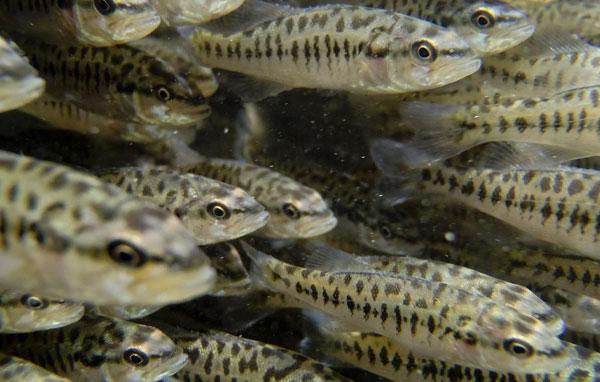
Guadalupe bass
The Guadalupe bass is the state fish of Texas -- the only place on earth where the species is found. The main threats to the species are reduced stream flow and hybridization with nonnative smallmouth bass.
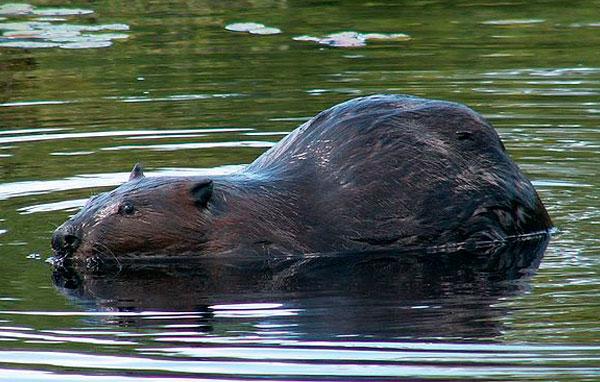
American beaver
The North American beaver, the largest rodent species in North America, are primarily aquatic and highly social. Considered to be ecosystem engineers, beavers construct dams to flood areas for forage and protection that also provide crucial habitat for other aquatic and wetland species.

American badger
The American badger is a member of the Mustelidae, or weasel family, and is native to grasslands of North America. This fierce carnivore is an excellent excavator and digs burrows in pursuit of prey, raising young and sleeping.

Eastern hardwood forest birds
Eastern deciduous forests provide important habitat for forest birds, which can reside in them year-round, or rely on them as breeding grounds or stop-over sited during migration. Deciduous forests have been subject to fragmentation, putting the wide variety of bird species they support at risk.
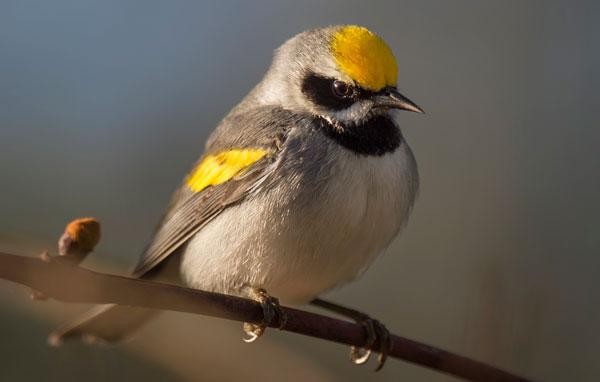
Golden-winged warbler
The golden-winged warbler is a striking, neotropical songbird with bright yellow plumage on the crown and wings. Their breeding range formerly extended across the Midwest to the east, but is now restricted to two isolated subpopulations: one in the higher-elevation areas of the Appalachians and the other around the Great Lakes into Manitoba. Loss of early succesional has resulted in population declines especially for the eastern population.
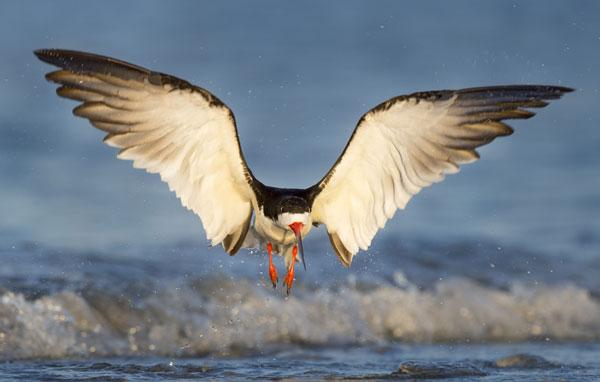
Black skimmer
Black skimmers are a beach-nesting, tern-like member of the gull family found across the Americas. The North American population migrates to the warmer waters of the Gulf and Caribbean during the non-breeding season. Skimmers are aptly named for their unique foraging strategy of skimming the water’s surface with their lower beak, or mandible, and snapping shut when it contacts a fish.
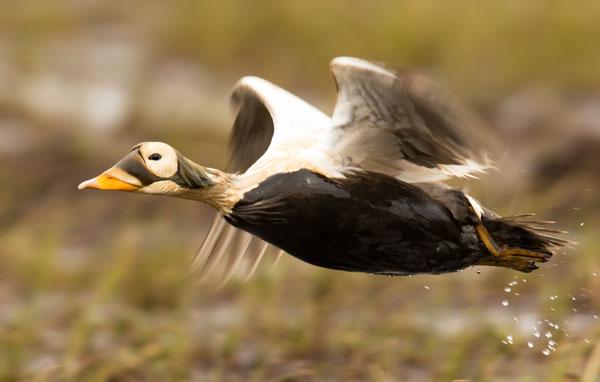
Spectacled eider
Spectacled eiders are a stunning and relatively rare seaduck, nesting on coastal tundra locations of the Yukon-Kuskokwim Delta and North Slope of Alaska, as well as Russia. Spectacled eiders were listed as threatened under the Endangered Species Act in 1993 due to observed population declines, and are currently at risk due to loss of habitat.
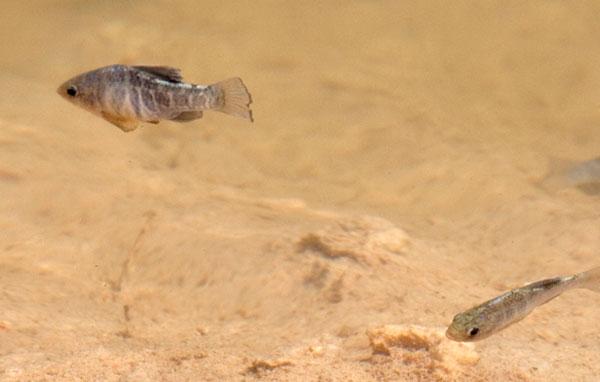
Pecos pupfish
The Pecos pupfish is an endemic, IUCN Red List vulnerable species historically found in New Mexico and Texas in the Pecos River, but is now limited to a few areas of Texas. Threats to the Pecos pupfish include river alterations, invasive species, nonnative species and diseases.
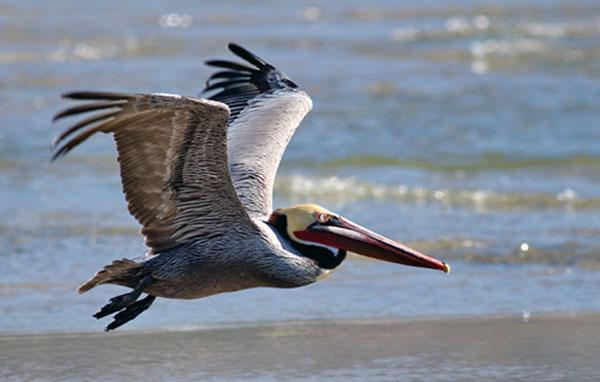
Brown pelican
Brown pelicans are a colonial nesting coastal seabird with five recognized subspecies found throughout the Atlantic and Pacific coasts of the Americas. Pelicans are well known for their plunge diving strategy—falling from heights above the sea's surface they stun small fish before scooping them up in their expandable throat pouch.
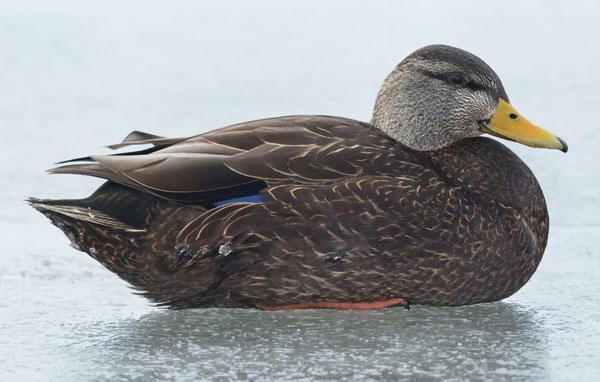
American black duck
The American black duck is large dabbling duck that resembles the closely related mallard, but is darker in appearance and much less common. Black ducks nest in wetlands throughout the Eastern Seaboard, including freshwater and salt marshes where restoration and protection are vitally important to maintaining black duck populations.
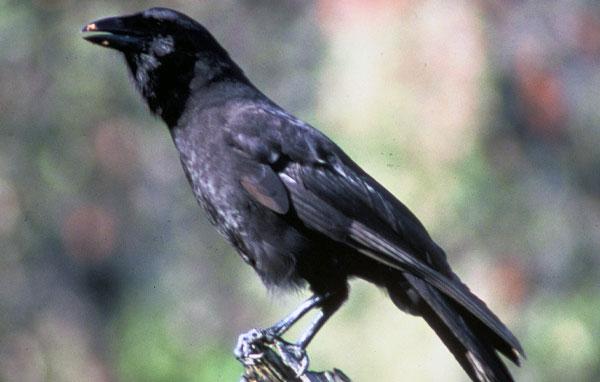
Alalā
Fossil record shows that the Alalā, or Hawaiian crow, is the only one of the original five species of crow in Hawai'i to survive extinction thus far. While the bird has been extinct in the wild since 2002, a captive-rearing program has been successful in growing the global population from 10 to more than 120 individuals. In 2016, an ambitious reintroduction program launched with the goal to re-establish a self-sustaining population of Alalā in native forests on the island of Hawai'i.
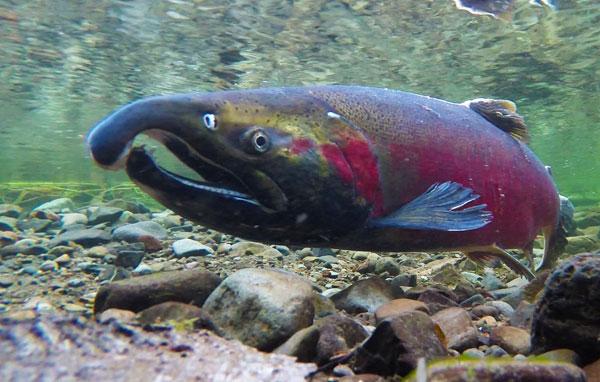
Coho salmon
Coho salmon is one of five salmon species along the West Coast of the United States, from the Alaskan arctic to Santa Cruz, California. The species is anadromous and populations in the lower portion of its range are severely affected by barriers to stream passage and ocean conditions, freshwater availability and land-use practices.
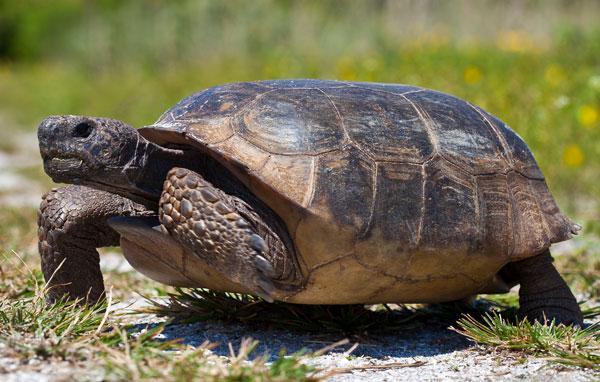
Gopher tortoise
Gopher tortoise are long-lived reptiles native to the upland pine forests of the southeastern United States. Considered a keystone species, more than 350 species of wildlife rely on their their complex burrow systems for shelter and protection, which makes widespread population declines of gopher tortoise of special conservation concern.
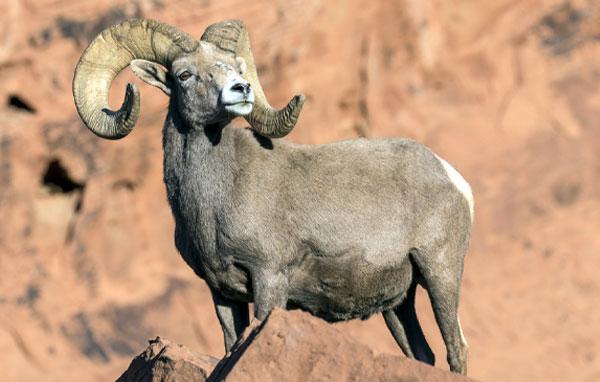
Desert bighorn sheep
Desert bighorn sheep are a distinct subspecies of bighorn sheep that inhabit hot, dry mountain ranges in North America and are well-adapted to survive in these extreme environments, including the ability to go several days without water. While both sexes develop horns, the horns of an adult male are much larger, and used for fighting and as tools to break open cacti while foraging.
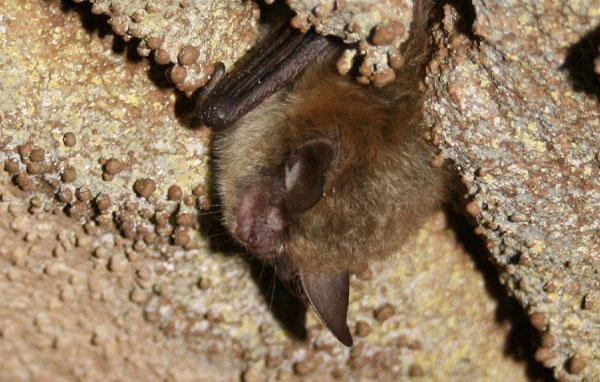
Northern long-eared bat
Northern long-eared bats are native to the old growth forests of the eastern and north-central United States. Populations in the northeastern United States have been severely affected by white-nose syndrome, a fungal disease that affects their hibernation, which led to their listing as an endangered species in 2015.

Pronghorn
Pronghorn, also known as "antelope," are sagebrush-dependent ungulate known for their incredible speed. They are the sole-surviving member of their taxonomic family. With an evolutionary history rooted in open-grasslands, pronghorn are reluctant to leap over fences that have been constructed across the West for rangeland management, causing disruptions of their ancient migration routes and reducing access to high-quality habitat.
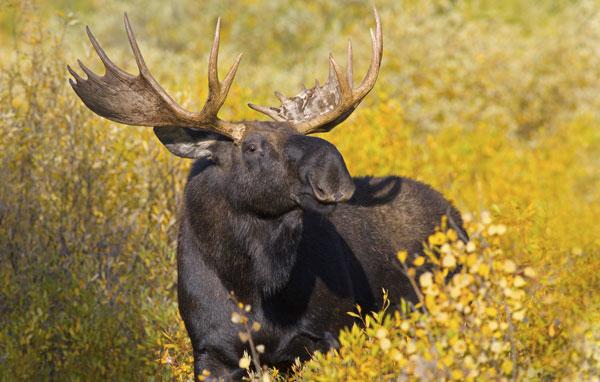
Moose
Moose are the largest of the deer species and the tallest mammals in North America. Their populations are limited to the northern forests of the United States and Canada, and they have thick, insulating fur to thermoregulate during the winter months. Moose forage on a variety forest plants and trees, and will also incorporate aquatic vegetation in their diet at certain times of the year.

American oystercatcher
The American oystercatcher is a stocky shorebird who is characterized as a short-distance migrant whose movements are confined to the United States and adjacent Caribbean islands. The oystercatcher wades in shallow water and uses its powerful bill to pry open and feed on mollusks, so protecting and restoring near-shore feeding grounds are critical for this species.

Blue crab
With their distinctive bright blue claws, blue crabs are one of the most iconic species of the Chesapeake Bay, where an estimated 594 million were found in 2019. These bottom-dwelling omnivores have a very wide geographic distribution that supports an important blue crab fishery in the Gulf Coast.
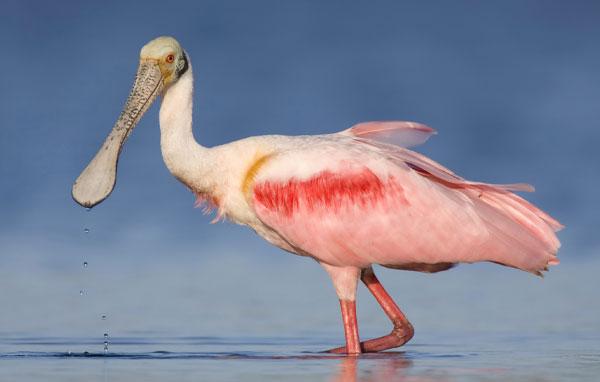
Roseate spoonbill
The striking roseate spoonbill is found in tropical and subtropical wetlands throughout the Americas. In the United States, it is found within the Gulf states where it remains uncommon and local.
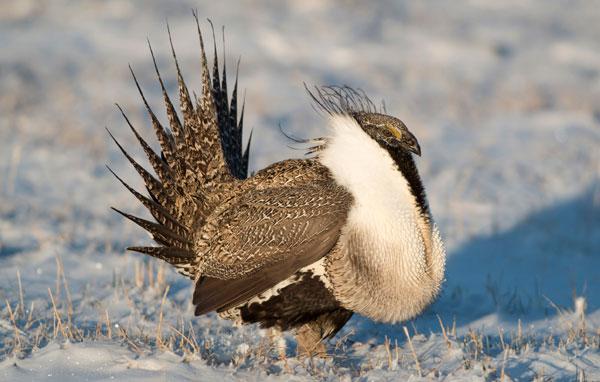
Greater sage-grouse
The greater sage-grouse is a sagebrush-dependent upland game bird and largest of the grouse species. Known for its theatrical mating displays on "leks" or breeding grounds, populations have been in decline due to loss of sagebrush habitat, and their ability to serve as an umbrella species for other sagebrush wildlife emphasizes the need to restore and protect their habitats.

Green sea turtle
Green sea turtles are found around the world, nesting in more than 80 countries including on U.S. beaches, where sustained conservation efforts have contributed to increasing populations in Florida, Hawai'i and across all five U.S. territories. Reaching more than 300 pounds, these gentle giants feed almost exclusively on seagrasses and algae.
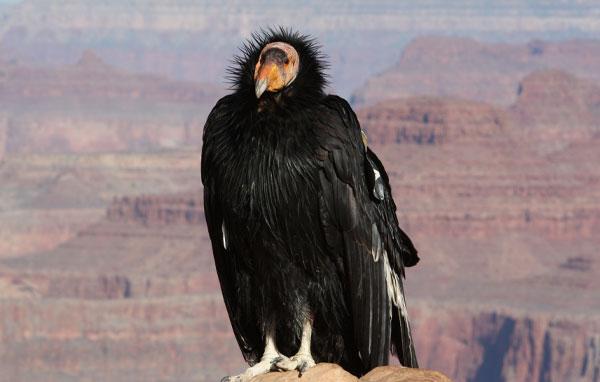
California condor
The California condor is the largest land bird in North America. In 1981, there were only 22 individuals remaining, but the species is increasing in numbers after being taken into captivity, bred and released to locations in California, Baja California, and Arizona. However, the California condor still highly threatened and dependent on conservation.
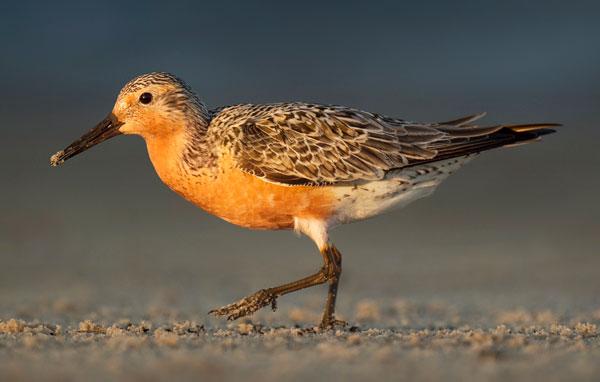
Red knot
The red knot is a shorebird known for long-distance migrations, with some populations traveling from Argentina to the Arctic every year. Stopover areas providing high-quality foraging habitat are critically important for the red knot. For example, large numbers of red knots arrive in Delaware Bay during their spring migration to feed upon horseshoe crab eggs, which provide an excellent source of energy that fuels completion of the northward migration and contributes to successful reproduction.
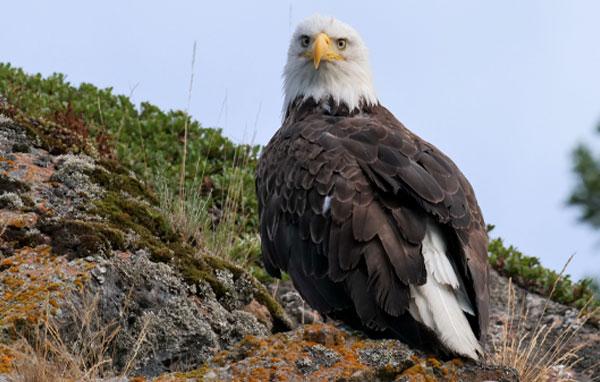
Bald eagle
The majestic bald eagle was chosen as the emblem of the United States in 1782. The species represents a tremendous conservation success story, with population numbers increasing sharply following a ban on the chemical DDT in 1972, which was poisoning bald eagles when they ate contaminated fish.
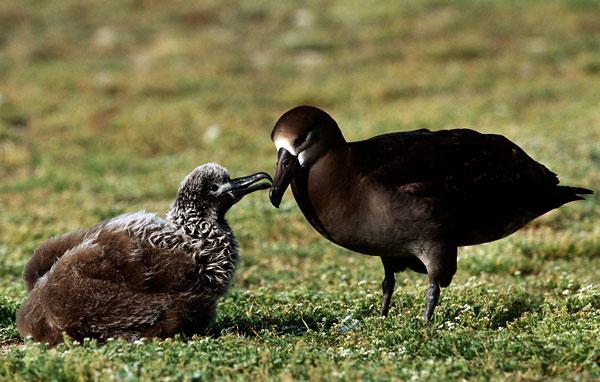
Black-footed albatross
The black-footed albatross is the smallest of three north Pacific albatrosses. Populations of all three species were devastated by feather hunters during the early 20th century with many colonies extirpated in the central and western Pacific. Today 95 percent of the global population nests in the Papahānaumokuākea Marine National Monument.
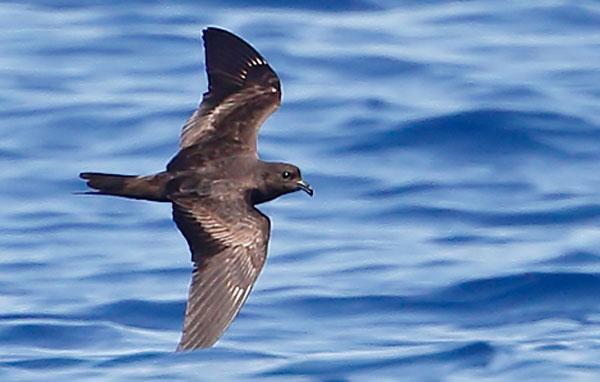
Black storm-petrel
Black storm-petrels are an agile, burrow- or crevice-nesting colonial seabird that lay a single egg and nest on offshore islands and rocks from southern California southward along the Baja peninsula of Mexico. Storm-petrels are the smallest members of the Procellariiformes order, an oceanic long-lived seabird group that includes albatrosses, shearwaters and petrels.
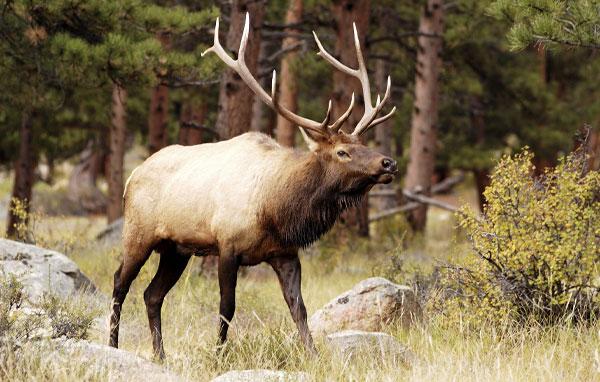
Elk
Elk are large herbivores known for the males' widely branching antlers and iconic bugle-call during fall mating season. Elk prefer open woodlands, and some populations migrate long distances between high-altitude summer ranges where they give birth, and low-altitude winter ranges to escape harsh winters.
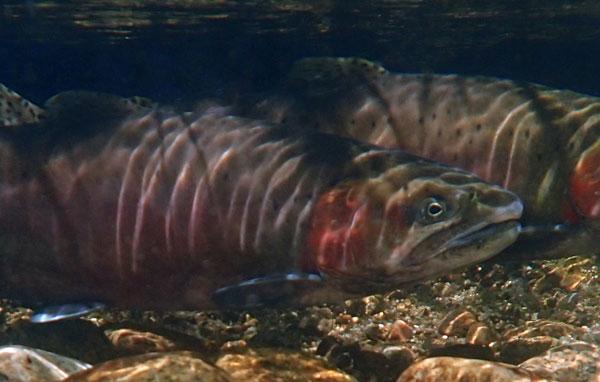
Lahontan cutthroat trout
The Lahontan cutthroat trout is a distinct species of cutthroat trout, native to cold-water habitats throughout the Lahontan Basin of northern Nevada, eastern California, and southern Oregon. Lahontan cutthroat trout have been listed as “threatened” under the Endangered Species Act since 1975, with key threats identified as habitat fragmentation and degradation that have led to genetic isolation and increased competition.
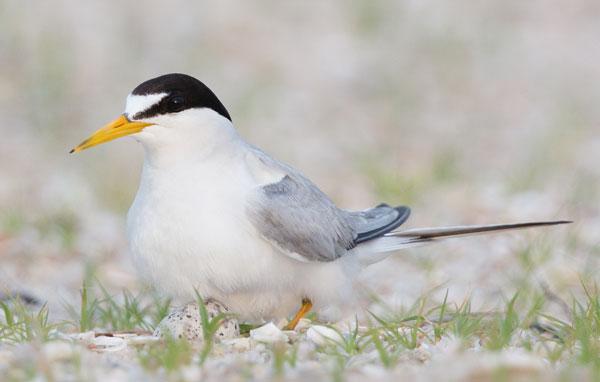
Least tern
Least terns are a small migratory North American tern with three distinct populations -- Atlantic coastal, interior and southern California. They are a vocal, colonial seabird vulnerable to development, human disturbance and predation on coastal nesting beaches. In some locations, least terns have begun successfully nesting on flat gravel roofs and are in general responsive to management actions.
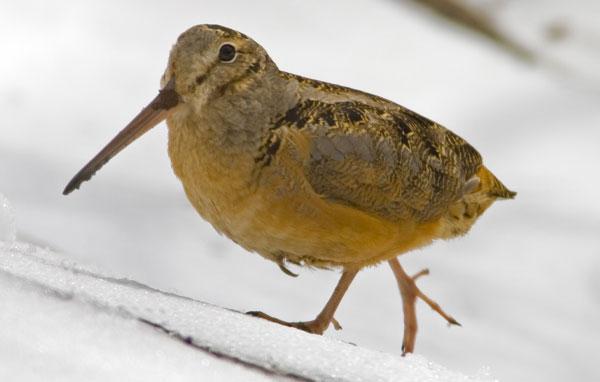
American woodcock
The American woodcock is a well-camouflaged migratory woodland shorebird. The bird feeds on earthworms, is a popular game species, and requires early successional forest habitat for feeding and nesting. Woodcocks are harbingers of spring, with returning males conducting elaborate aerial courtship displays along old field edges as the last winter snows recede.

Red-cockaded woodpecker
The red-cockaded woodpecker is a territorial, highly social bird that inhabits fire-maintained mature pine forests throughout the southeastern United States. Population declines coincided with extensive logging of longleaf pine stands in the early 20th century, and led to the species being placed on the Endangered Species List by 1970.
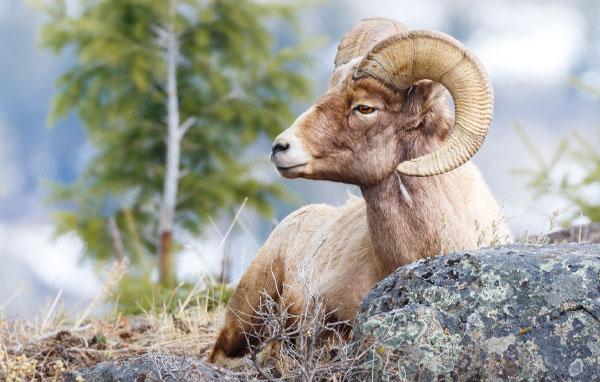
Bighorn sheep
Bighorn sheep are agile climbers with specialized hooves that allow them to navigate rugged, rocky slopes where they forage on a variety of seasonal plants and shrubs. Found in the western United States, bighorn sheep live in social groups, but males, or rams, and females, or ewes, only meet to mate.
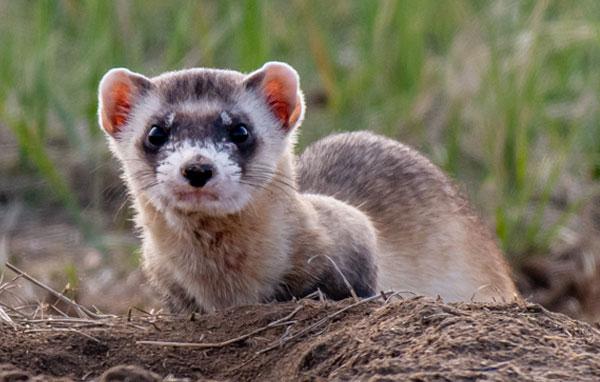
Black-footed ferret
Thought to be extinct in the wild until 1981, the critically endangered black-footed ferret is North America's only native ferret species and a member of the weasel family. Loss of native grasslands, disease, and declines in prey abundance contributed heavily to their decline, but captive breeding and reintroduction programs have helped this species reestablish small portions of their historic range.
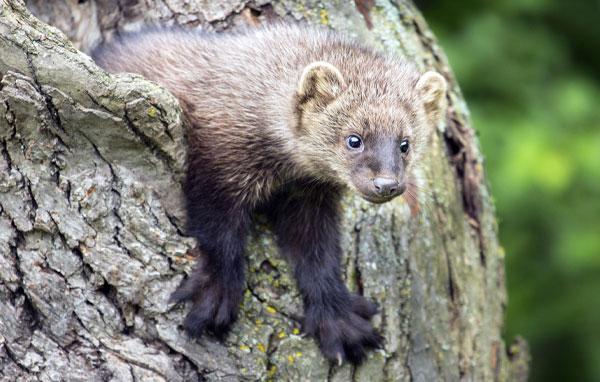
Fisher
Fishers are a forest-dwelling member of the Mustelidae, or weasel family, and have reclaimed much of their historic range after unregulated fur trapping and forest clearing caused severe population declines. They are specialized predators of porcupines and the only carnivore species that deliberately target them as prey.
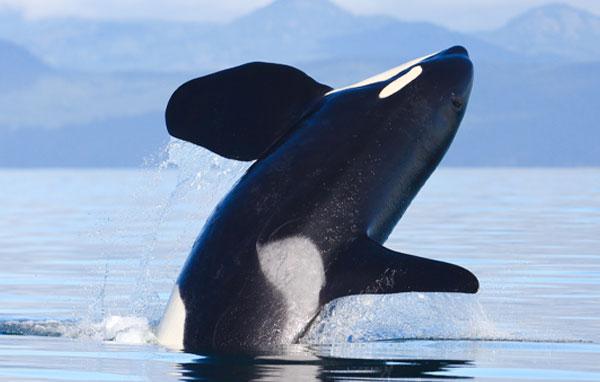
Killer whale
Weighing as much as 11 tons and measuring up to 32 feet in length, killer whales are the largest oceanic dolphins and a top marine predator. While they are widely distributed throughout the world’s oceans, the endangered Southern Resident population, which spend most of their time in the inland waters of the Salish Sea, is declining significantly with just 73 animals remaining.
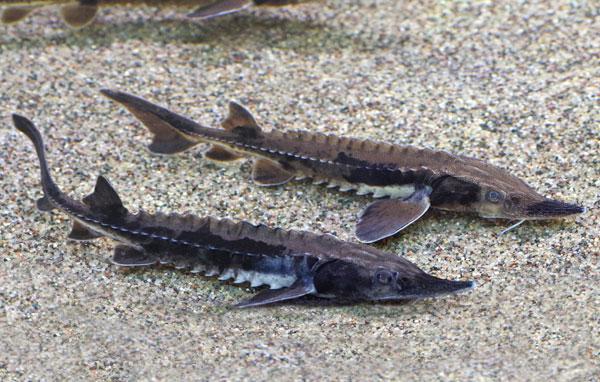
Lake sturgeon
The lake sturgeon is native to rivers and lakes from Hudson Bay to the Mississippi River. It is among the longest-living fish, with some individuals living more than 100 years. A species that evolved more than 150 million years ago, overfishing, particularly in the Great Lakes system, has decimated populations and recovery has been slow due to low reproductive rates and other sustained antropogenic threats such as pollution and introduced aquatic species.
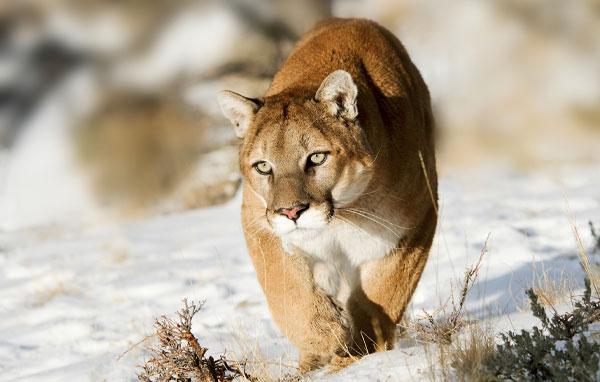
Cougar
The cougar, also known as mountain lion or puma, is a powerful predator that is found in a variety of habitat types from Canada into South America. Cougars are stealthy ambush hunters that can exploit many prey types, although their primary food source is deer. Cougars actively patrol large home territories and survive in low densities.
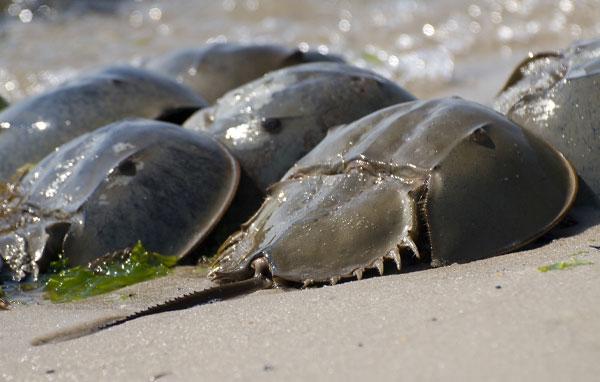
American horseshoe crab
The American horseshoe crab plays an integral ecological role, particularly in the Delaware Bay where hundreds of thousands of shorebirds rely on horseshoe crab eggs to build energy reserves for their northward migration. Contrary to their name, horseshoe crabs are in fact not crabs at all. They are arthropods, making them more closely related to spiders and scorpions.

Whimbrel
The whimbrel is a large shorebird that uses its long, curved bills to feed on crabs and other invertebrates in the sand or mud. The most widespread of the curlew species, these birds winter throughout the Caribbean and northern South America and nest in the low-Arctic. Restoring and protecting critical foraging sites is an important strategy for maintaining a healthy population.
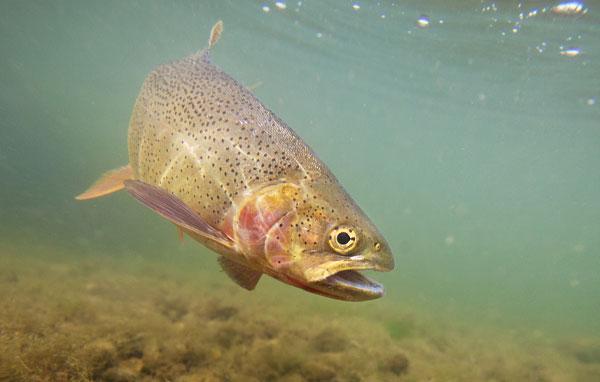
Cutthroat trout
Cutthroat trout (Oncorhynchus clarkii) encompasses a number of distinct trout subspecies. These are iconic denizens of western landscapes, known for the red "cutthroat" under their jaw. They are associated with cold, clean, highly oxygenated streams, though many of the forms live in lakes and one is anadromous. Cutthroat trout are impacted by stream barriers, invasive fish and de-watering of their habitat.
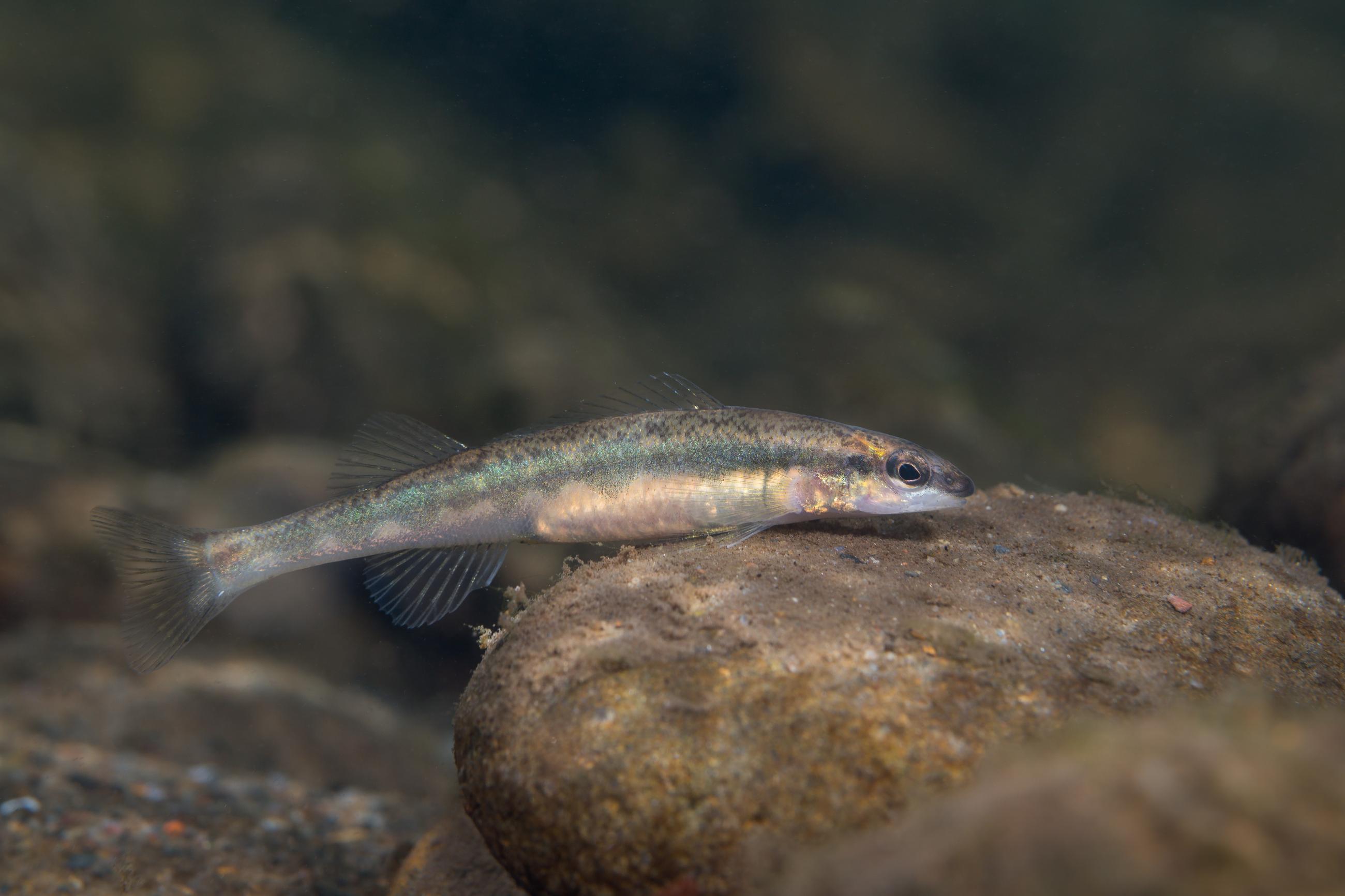
Bridled darter
The bridled darter is a small, freshwater fish discovered in 2007 that has a limited distribution within the headwaters of the Coosa River in northern Georgia and southern Tennessee. This species is threatened by runoff caused by agriculture and forestry activities as it is very sensitive to water pollutants.

Pollinators
Pollinators are a group of insect, avian and mammalian species that fertilize many flowering plants and agricultural crops by transferring pollen from the male structures (anthers) to the female structures (stigma) during foraging. More than 80 percent of flowering plants on Earth need pollinators to produce the next generation, and it is estimated that they add hundreds of billions of dollars to the global economy, highlighting their extreme importance to human food security.
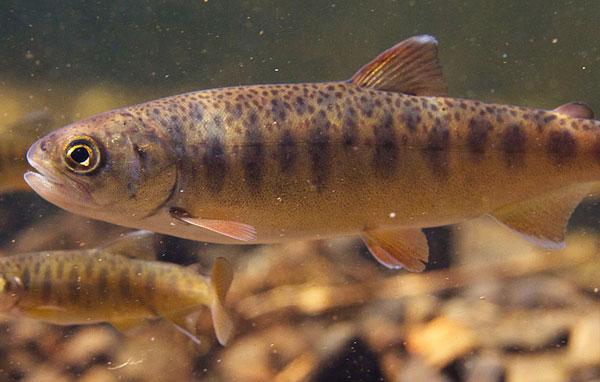
Central California Coast coho salmon
The central California coast coho salmon is an evolutionarily significant unit of coho salmon that are found from central California near Punta Gorda to the northern border of California. They are an endangered species that rely on proper timing of streamflows in rivers to allow individuals to spawn and increase juvenile survival.
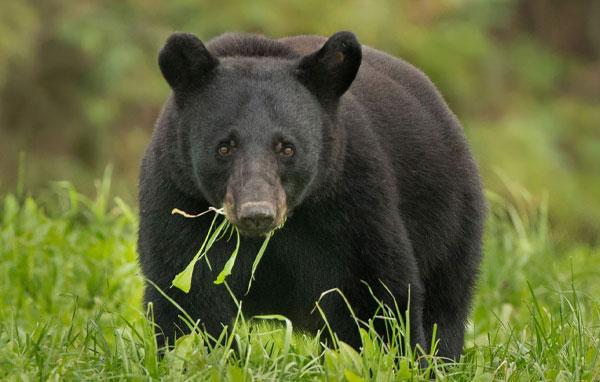
Louisiana black bear
One of 16 subspecies of the American black bear, the Louisiana black bear was listed as threatened in 1992 under the Endangered Species Act, citing habitat loss and fragmentation as primary threats to their populations. Significant improvements in population size and habitat achieved through concerted reforestation efforts and translocations resulted in the Louisiana black bear’s removal from the Endangered Species List in 2016.

Elkhorn coral
Elkhorn coral is one of the most important reef-building corals found in the Caribbean, where individual colonies can grow more than 6 feet in height and 12 feet in diameter. Elkhorn coral were listed as threatened following a severe disease outbreak that caused widespread mortality, decimating the population to less than 3 percent of its former abundance. Warming ocean temperatures are a further stress on these corals.
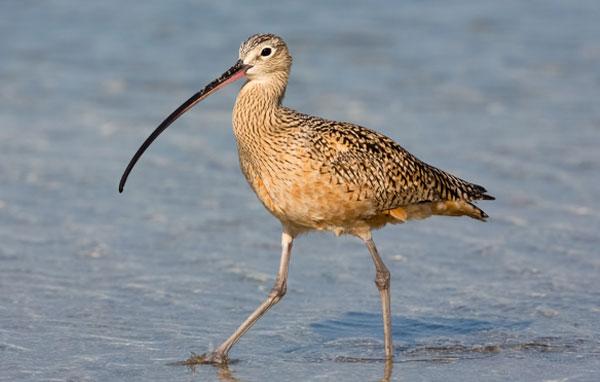
Long-billed curlew
Long-billed curlew are a charismatic member of the Northern Great Plains bird fauna. The species is North America's largest shorebird and are of conservation concern due to long-term declines and pervasive threats across both nesting and wintering locations. Long-billed curlews use their very long decurved bill to probe for crabs, shrimp and mollusks in the coastal marshes and mudflats of California and Mexico during their non-breeding period, and to pick up grasshoppers and other terrestrial insects as they trundle along through the prairie.